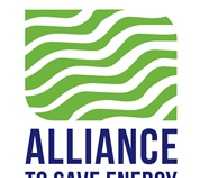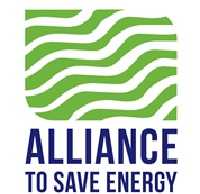Real Estate Economists Expect Continued Moderate Growth for the Commercial Real Estate Industry Through 2019, Says New ULI Semi-Annual Market Survey
WASHINGTON ( October 12, 2017) – (RealEstateRama) — The U.S. commercial real estate industry is, in general, expected to experience moderated growth through much of 2019, according to a new three-year economic forecast from the Urban Land Institute (ULI) Center for Capital Markets and Real Estate.

The latest ULI Real Estate Economic Forecast, (formerly the ULI Consensus Forecast), a semi-annual outlook, is based on a survey of 48 of the industry’s top economists and analysts representing 34 of the country’s leading real estate investment, advisory, and research firms and organizations. The survey, conducted in September 2017, provides forecasts for broad economic indicators; real estate capital markets; property investment returns for four property types; vacancy and rental rates for five property types; and housing starts and prices.
The forecast, released today, projects relative high but moderating commercial real estate volumes; continued commercial price appreciation (but at a decelerating rate); rent growth; positive returns (also at lower levels); relatively stable vacancy/occupancy rates for all commercial real estate sectors, and continued growth in single-family housing starts.
“Respondents to the October 2017 ULI Real Estate Economic Forecast downplayed the possibility of a spike in economic growth through 2019,” said ULI leader and survey participant William Maher, director of North American strategy and research at LaSalle Investment Management. “At the same time, they confirmed that the current expansion could become the longest one since records were kept starting in the 19th century. While real estate will benefit from continued growth, U.S. property markets are close to equilibrium, which should result in inflationary rent growth and returns in the single digits for core real estate and equity real estate investment trusts (REITs).”
Among the survey’s key findings for commercial real estate:
- Commercial real estate prices as measured but the Real Capital Analytics (RCA) Commercial Property Price Index (CPPI) is projected to rise by an average of 4 percent per year over the next three years (5 percent, 4.1 percent and 3 percent, respectively), compared to the prior forecast’s average of 3.9 percent, and the long-term average increase of 5.6 percent.
- Over the next three years, national vacancy or availability rates are forecast to rise modestly for all property types except industrial, which will stay flat. Apartment vacancies are expected to increase from 4.8 percent to 5.1 percent in 2019, down from 5.4% in the prior survey. Industrial availability will be 7.9 percent in 2019, no change from 2016 and well below the long-term average of 10.2 percent. The office vacancy rate is forecast to increase steadily over the next three years, ending 2019 at 13.4 percent. Retail availability is expected to reach 10.3 percent in 2019.
- Real estate transaction volumes will fall to $450 billion in 2017, a decline of $46 billion (9 percent) from the 2016 level. The 2017 forecast is unchanged from the last two editions. Transaction volume forecasts for 2018 and 2019 are lower than previous, at $427 billion and $414 billion, respectively.
- The single-family housing outlook improved over the past six months, with starts forecast to reach 960,000 units in 2019, closing in on the long-term average of 1 million per year. Home price growth is forecast to average 4.8 percent over the next three years.
- Industrial rent growth will lead all property types with 2017-2019 growth averaging 3.7 percent, followed by hotels at 2.7 percent revenue-per-available-room (RevPAR) growth; apartments, 2.3 percent; office, 2 percent; and retail,1.7 percent. Compared to the last forecast, retail rents fell the most (0.6 percentage points) which reflects the elevated levels of retailer bankruptcies and announced store closings.
Among the survey’s key findings for major economic indicators:
- U.S. GDP is expected to grow by 2.2 percent in 2017 and 2.4 percent in 2018, which is a slight decline from the previous forecast. Forecasts for both years are close to the 20-year average of 2.35 percent, with growth moderating to 2. percent in 2019.
- Net job growth is expected to average 1.76 million per year through 2019, compared to a long-term average of 1.2 million. Compared to the last economic forecast, job growth is expected to be lower for 2017, 2018 and 2019. Job growth is forecast to reach 2 million in 2017, falling to 1.5 million in 2019, possibly due to concerns about labor availability, as the unemployment rate drops to 4.2 percent in 2018, the lowest rate since 2000.
- Expected yields on the 10-year U.S. Treasury note were lower in the most recent forecast compared to the last one. The forecast for year-end yield is 2.4 percent for 2017, 2.7 percent for 2018, and 3 percent for 2019. Yields are expected to remain well below the 20-year average of 3.8 percent.
The market survey is the most recent in a series of polls conducted by ULI to gauge sentiment among economists and analysts about the direction of the real estate industry. The next ULI Real Estate Economic Forecast survey is scheduled for release in April 2018.
NOTE TO REPORTERS AND EDITORS: ULI’s Real Estate Economic Forecast survey results were released today during a ULI webinar open to ULI members and the press. Webinar participants were Anita Kramer, senior vice president, ULI Center for Capital Markets and Real Estate; Ken Rosen, chairman of Rosen Consulting Group, chairman of the Fisher Center for Real Estate and Urban Economics, and a ULI trustee; Mark Wilsmann, managing director and head of equity investments for MetLife Real Estate Investors; Adam Ruggiero, director and head of real estate research, MetLife Real Estate Investors; David Gilbert, chief executive and investment officer, Clarion Partners, and a ULI trustee; and Tim Wang, managing director and head of investment research, Clarion Partners, and a ULI member.
Interviews with the panelists and access to the archived webinar recording are available upon request to members of the media.
About the Urban Land Institute
The Urban Land Institute is a nonprofit education and research institute supported by its members. Its mission is to provide leadership in the responsible use of land and in creating and sustaining thriving communities worldwide. Established in 1936, the institute has more than 40,000 members worldwide representing all aspects of land use and development disciplines. For more information, please visituli.org or follow us on Twitter, Facebook, LinkedIn, and Instagram.
contact: Trish Riggs, 202-624-7086;















